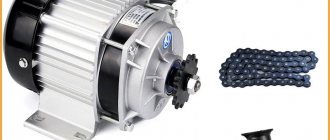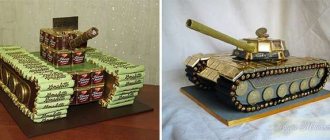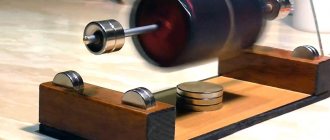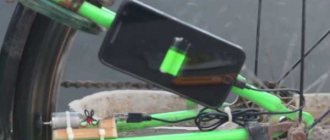Antifreeze, or antifreeze, is a liquid that is poured into the expansion tank of a car's cooling system. Literally translated into Russian, the word “antifreeze” means “anti-freeze.” This liquid does not solidify at subzero temperatures, cools the engine during operation and protects its elements from corrosion.
The composition of factory antifreezes includes ethylene glycol, propylene glycol, glycerin mixtures, monohydric alcohols, water and other substances. Sometimes flavorings are added to them.
Some car owners make antifreeze at home and note that it is not at all difficult. Look for the “recipe” further in the article.
But first, let’s figure out what is called antifreeze and what is antifreeze, and is there a difference between these liquids.
General description and properties
The qualitative composition of antifreeze does not differ from foreign analogues. The discrepancies are only in the percentage of components. The coolant is based on distilled or deionized water, ethanediol or propanediol alcohols, anti-corrosion additives and dye. Additionally, a buffer reagent (sodium hydroxide, benzotriazole) and an antifoam agent - polymethylsiloxane - are introduced.
Like other coolants, antifreeze lowers the crystallization temperature of water and minimizes the expansion of ice when freezing. This prevents damage to the engine cooling system jacket in winter. Has lubricating and anti-corrosion properties.
Antifreeze made from ethyl alcohol
The stronger the water-alcohol solution, the more resistant it is to frost. Base alcohol strength – 96% +/- 2%. Here is a table showing the ratio in which you need to mix water and alcohol in order to make anti-freeze from them at home for various weather conditions:
At home, you can also add a little essential oil for scent and a tablespoon of washing powder to the solution to increase cleaning properties. Just don’t pour the powder directly into the canister. Pour out 2/3 cup of water prepared for the solution and add the powder there. Stir and let sit. Then you can pour this into a non-freeze container, filtering out the sediment.
Often the recipe contains detergent. Choose a regular kitchen one that is non-aggressive towards metal and plastic.
It's great if you have some free ethylene glycol or antifreeze. Their use adds a couple of pluses to the characteristics of a homemade washer. Calculate the required volume yourself on the basis that for every degree below zero it is advisable to pour in 10–15 drops. It turns out that in severe frost you will need about 2 cups of ethylene glycol or antifreeze.
High quality coolant
An indispensable solution for a car's expansion tank is antifreeze. Antifreeze was invented back in Soviet times. Antifreeze contains the following components:
- water;
- anti-corrosion additives;
- phosphates; burats;
- alcohols;
- glycerol;
- glycols;
- alcohols.
In the modern world of development and improvement, there are a lot of antifreezes, different in composition, properties and, accordingly, pricing policy. But we should not forget that its main function is to protect the external combustion engine system from hypothermia and freezing. When choosing a new solution, pay attention to the composition.
Anti-freeze made from vodka
Vodka is found in almost every home, so to make anti-freeze from it, you need to take:
- 0.5 liters of vodka;
- 0.5 liters of clean water;
- 2 tsp. dishwashing detergents (for example, Fairy).
If you absolutely want a beautiful wash, add just a little blue or potassium permanganate to the solution.
The solution is completely safe for humans and machinery. This antifreeze is suitable for temperatures above –15 degrees. In cold weather there is no need to dilute vodka with water. But if the temperature outside the window is below - 30 degrees, then pure vodka will not save you, it will simply freeze.
What is antifreeze?
Antifreeze is a general name for low-freezing coolants (antifreeze) based on ethylene glycol with inorganic additives, intended for use in the cooling system of a car engine in the cold season.
Winter operation of vehicles equipped with an internal combustion engine with a liquid cooling system has always been associated with a lot of problems. One of them is freezing of the coolant. When water freezes, it expands, which can lead to rupture of the radiator, pipes, and even the engine block. This problem is solved by using special low-freezing (winter) coolants (coolants) - antifreezes, which remain in the liquid phase at subzero temperatures.
Such liquids include Antifreeze developed in Russia. This antifreeze first appeared almost half a century ago, but due to its price it is still popular and in demand among motorists.
First problems
Along with the improvement of cars, the first troubles appeared. As it circulated through the new cooling systems, the heated antifreeze absorbed the metal. So the impeller and the walls of the cylinder head channels were left without whole pieces. Research institutes immediately began to solve this problem and proposed using additives in the form of inorganic salts to reduce corrosion activity. They contributed to the appearance on the walls of metal surfaces of a layer resistant to ethylene glycol.
At the same time, another name for antifreeze appeared - antifreeze . It appeared in a rather interesting way. The first three letters came from the department at the institute that dealt with the problems of improving antifreeze - “Organic Synthesis Technology”. The ending -ol is a tribute to chemical terminology. This is how the country first became acquainted with antifreeze!
What is this
Antifreeze or antifreeze is a non-freezing liquid that is poured into the expansion tank of a car. It is also used in heating systems. Translated in our language, antifreeze means “anti-freeze.” That is why it is also called anti-freeze. That is, this liquid does not freeze at subzero temperatures; it also cools the engine during operation and protects its elements from corrosion.
The production of antifreeze does not have a negative impact on nature. The composition of factory antifreeze often includes ethylene glycol, propylene glycol, and glycerin mixtures
, as well as monohydric alcohols and other substances that are made on the basis of water. Sometimes more flavorings are added. Note that it is quite easy to make antifreeze at home. How exactly? Read on!
Detailed antifreeze recipe
Of course, not every driver can afford to buy expensive antifreeze from well-known manufacturers and suppliers. Most likely, this is why many car owners began to look for an antifreeze formulation in order to save financial resources. In reality, everything turned out to be not so simple. Large companies do not give away trade secrets, which, without a doubt, include product recipes. This is their profit - everything is logical and understandable here. I had to experiment for a long time.
But with the development of information technology, data has become more accessible. In particular, databases of patents from the times of the Soviet Union were posted on the Internet, where you can find the antifreeze recipe. Here we present just a few options. Anyone with access to the network can significantly expand this database
Main characteristics of coolant
Every experienced driver knows that in severe frost and terrible heat it is necessary to look into the expansion tank. Modern cars have a special sensor that shows the cooling temperature and fluid level. But it happens that it is not in working order or is not there, then the marks on the expansion tank will show you the volume and its color. Yes, color is the first feature of coolant. The most common antifreeze is blue or red.
, accordingly, their markings are different. Blue antifreeze - Antifreeze 40, red -65. Why do we need color coding?!
The color difference is necessary in order to determine which one was previously filled, as well as to compare its leaks and the level of coolant in the tank.
Antifreeze is not only a cooling solution, but it also has anti-corrosion properties, which are very important for engine operation.
It may also differ in some composition, but mainly it should include ethylene glycol. This is one of the main components of “anti-freeze” – this is what drivers also call coolant.
Why is the concentrate diluted?
I’ll answer one popular question right away. It concerns whether it is possible to pour concentrated liquid without diluting it first. No, you absolutely cannot do this, since the consequences could be extremely sad. The caustic composition can damage cooling system components.
Let's look at the antifreeze itself. The coolant's job is to constantly maintain a stable engine operating temperature. Depending on the motor itself, its normal temperature can be from 90 to 110 degrees Celsius. Some heat up even more, which is quite normal for certain internal combustion engines. If the temperature parameters go beyond these limits, overheating will occur with all the ensuing negative consequences. Not only does the expansion tank cap rip off in the car, but various other destructive processes also occur. The water pump may also be damaged.
Types of non-freezing liquid for heating
Having decided that non-freezing coolants for the heating system should only be of factory quality, you can begin to select a specific composition. It must be adapted to a specific heat supply scheme, and its performance indicators cannot worsen the parameters of the system.
Before pouring non-freezing liquid into the heating system, you need to find out whether it will negatively affect the heating components. To do this, you should read the instructions for use, which must be included. It is also important to pay attention to the main component of the antifreeze fluid for heating boilers. Not only the condition of the heat supply components, but also the operating conditions depend on this:
- Ethylene glycol . Characterized by high toxicity. Therefore, it can only be used in closed circuits. Difficulties may arise when pouring this type of freezing liquid into the heating system. In a vapor state, it is hazardous to human health;
- Propylene glycol . In fact, it is a food additive, so it can be used in both open and closed heating systems. In contrast to ethylene glycol, the crystallization temperature is +80°C, which makes it possible to use it to operate high-temperature solid fuel boilers. The only drawback is the high cost;
- Glycerin . The most popular type of non-freezing liquid for stove heating. Its performance qualities are slightly lower than those of propylene glycol. However, at the same time, the cost of glycerin antifreeze is an order of magnitude less. Disadvantages include high turnover. This may affect the tightness of the pipelines. The solution is to replace the rubber gaskets with paronite gaskets.
Currently, the use of non-freezing liquid for a home heating system based on glycerin is the best option.
| Name | Compound | Price, rub/l |
| Warm house -30°С | Propylene glycol | 65 |
| Dixis -65 | Glycerol | 75 |
| Coziness Technology -65 | Ethylene glycol | 120 |
Leading manufacturers
Sometimes it is fundamentally important what kind of car you have, Toyota, Ford, Volvo, Renault or a car of another brand. Each manufacturer uses a cooling system with certain parameters and components adapted to work with a specific type of coolant.
Before purchasing any liquid, check the instruction manual. As for popular and well-known concentrates, they include the following mixtures:
It’s up to you to decide whether to use Castrol or Total. The main thing is that the composition is suitable for your engine. Be sure to take this into account.
The choice of fluid for the cooling system is made based on the operating conditions and recommendations of the manufacturer of the engine, and not the coolant.
Subscribe to our website, leave comments, ask relevant questions and tell your friends about our project!
( 2 ratings, average: 5.00 out of 5)
What you will need
Antifreeze is responsible not only for cooling the engine, but also maintains its normal performance, while eliminating corrosion and protecting against rust particles with the help of special additives contained in the composition. If you dilute the concentrate with tap water, there is a risk of not only reducing the effectiveness of the additives, but also adding microelements to the liquid that negatively affect engine performance and cause corrosion.
In addition, compounds of chlorine, magnesium, calcium and other chemical elements found in tap water clog small channels in the engine, thereby reducing the effectiveness of the coolant.
From the above it follows that to make a mixture from antifreeze concentrate, you need not only a high-quality concentrate, but also distilled water that does not contain impurities.
The idea of heating antifreeze for a diesel car: basic provisions and nuances
The essence of the solution
Modern diesel engines are distinguished by the fact that they use heating of antifreeze with glow plugs in a certain temperature range. The main goal is to extend the life of the particulate filter. When cold, the fuel does not burn completely and soot is formed, which settles on the honeycomb of the filter element. As it warms up, its concentration in the exhaust gases decreases.
Structurally, the idea is presented in the form of a metal block into which special glow plugs are screwed. The housing is a component of the cooling system - a “coolant” circulates through its internal cavity. Most often, the assembly unit is integrated into the cylinder head.
The spark plugs are not always active: the ECU specifies a maximum coolant temperature below which the heater starts working. The system operates in fully automatic mode - when the upper thermal limit (60-75°C) is reached, the heater is deactivated.
Requirements
Let’s say right away that the installation should not be regarded as pre-heating of the coolant. This is not Webasto or Eberspächer! The device operates exclusively when the engine is running - the liquid must circulate through the internal channel.
Based on the operating features of the factory coolant heater, you can create a list of requirements that must be met when assembling and installing a home-made product:
- Switching on should occur after starting the engine.
- Automatic control is carried out by a temperature sensor, which opens the power circuit when it reaches 60-75°C and supplies current to the spark plugs at temperatures below 60-75°C.
- Duplicate manual channel for selecting the operating mode.
Cutting and quenching fluid[edit | edit code]
Lubricant-cooling and quenching liquid "Tosol-OIZ" ("OIZ" - "cooling and quenching") is intended for use in metal-cutting machine equipment for lubrication and cooling of parts during grinding, as a quenching liquid for heat treatment of metals, as well as a passivating solution for parts made of steel and cast iron. It is obtained by dissolving triethanolamine and sodium nitrite in distilled water. It is produced in the form of a concentrate that requires dilution with water, in two grades - “A” when using grade I sodium nitrite and “B” - grade II. The appearance of the concentrate is a yellow-brown to brown liquid; when ready for use, it is a transparent yellowish solution.
Anti-freeze from moonshine
Before you make anti-freeze for a car from moonshine, it would be nice to know how many degrees there are in your “primary”. If it was prepared for food use, it is 30–40 degrees. If it’s for medical or technical purposes, it can be all 90 degrees.
High-percentage or poorly distilled moonshine contains methanol and acetone. But you shouldn’t be too afraid of this. The concentration of these poisons (let's call them that) makes moonshine hazardous to health when consumed internally, but it is unlikely to damage the washer pipes and reservoir. Just in case, be careful: do not sniff the solution.
Anti-freeze based on 90% moonshine is made in the same way as from ethyl alcohol, only adjusted for strength. If it is a food substitute, use the vodka omyvayka recipe. But again, consider the mass fraction of alcohol. That is, if you are not sure that your moonshine is 40%, pour a little more of it into the canister than necessary.
What cars is it intended for?
Antifreeze is a more specialized coolant that is suitable for sports cars and SUVs; as for antifreeze, it can be poured into expansion tanks of any makes and models of cars. It is manufactured as a universal cooling solution
. The chemical composition of the coolant is very rich in elements and components that serve not only as an anti-freeze agent, but also as an anti-corrosion substance. According to reviews from car dealerships, it is even suitable for trucks as an effective coolant.
How to make a good antifreeze at home
from
Evgeniy 11/16/2018, 07:24 pm 8.8k P 61 G Comments
How to make a good antifreeze for your car at home? Is it possible to make it from alcohol, vodka, vinegar and other available materials? What recipes exist and in what proportions should the ingredients be mixed so that the windshield washer does not freeze in the cold? And does it make sense to make anti-freeze at home yourself for sale? About all this in our article.
There are a lot of anti-freeze products on sale today. Different types, colors and smells. Accordingly, the quality is also different. And at the same time the prices are quite reasonable. If you don’t like one, you can buy another one at the nearest store. However, despite the wide selection and availability of omyvayka, Russian Kulibins are always trying to invent something of their own.
There are many recipes on the Internet on how you can make high-quality anti-freeze for cars at home: from alcohol, vodka, vinegar, windshield cleaner, even from moonshine. It tells you in what proportions to mix all this in order to make a good antifreeze with your own hands.
By and large, the game is not worth the candle. It's easier to buy than to bother with beakers. But let's imagine that there is no other way. For example, in the middle of winter you suddenly find yourself at the end of the world and there is simply nowhere to buy auto chemicals, but you have already used yours. Then you will have to make an antifreeze from available materials.
Possibilities and limitations on the use of antifreeze
In accordance with the accepted classification, antifreeze belongs to the traditional type of antifreeze - low-freezing coolant, which is based on ethylene glycol and a package of inorganic additives. Such antifreezes have a number of disadvantages: the chemical activity of ethylene glycol, already mentioned above, and inorganic additives, which during engine operation settle on the internal surfaces of the cooling system parts, worsening heat transfer. Modern carboxylate and lobride antifreezes with organic additives do not have these disadvantages, so many automakers have completely switched to using them in their cars.
If the manufacturer clearly states that it is necessary to use a certain type of antifreeze on a given specific car model, it is better to follow this recommendation and refuse to use antifreeze. When using antifreeze, there is a very high risk of engine damage, and in the case of a new car, also loss of warranty.
If the automaker allows the use of traditional antifreeze, then you can safely pour antifreeze into the engine. However, in order to avoid rapid exhaustion of the engine life and damage to parts of its cooling system, used antifreeze should be regularly replaced. The service life of antifreeze depends on many factors; it can differ significantly depending on the temperature conditions of the power unit, so the car owner must monitor the condition of the antifreeze himself - just pay attention to its color (over time it changes and fades) and consistency. If the antifreeze is replaced in a timely manner, minimal damage will be caused to the engine, and the car owner will prevent unnecessary repair costs.
Homemade heating of antifreeze in the cooling system with glow plugs: design basics
The main structural elements of the heater are the block and spark plugs. The electrical part consists of large cross-section wires, a thermal relay (thermal sensor), a fuse and an electric relay designed for high current. The main difficulties are associated with the manufacture of the housing to accommodate the heaters.
Components
When designing antifreeze heating for a diesel engine with your own hands, you should pay special attention to the number of spark plugs: two or three heaters are quite enough. An excessive increase in the number of heat-generating components is fraught - each candle has a power of about 200-250 W and consumes considerable current.
Branded heater housings are available both at disassembly sites and in retail sales. One of the options is VAG 028 121 145B for three spark plugs. Price – about 2,000 rubles. In addition to this product, it is recommended to purchase sealing rubber VAG 037 121 687. An alternative is to look at disassembly sites:
- JP GROUP 114505200.
- TRICLO 463201.
- Vaico V10-0962.
- MALO 116092.
- Renault 8200012119.
- Hyundai/Kia 97341-26100.
The VAG block is focused on one-way communication. Installing a plastic counter flange will help correct this issue. Its catalog number is VAG 026 121 144E. The cost is about 500 rubles. Alternative parts:
- VIKA 14253 (metal – 250 rubles).
- DELLO 301210144026E (plastic – 50 rubles).
- VAICO V100270 (plastic – 80 rubles).
- JP GROUP 1114500600 (plastic - 50 rubles).
- VAG 0261211452 (metal - 750 rubles).
For systems with automatic control, you could consider a splitter for a temperature sensor VAG 028 121 144N. But it is not recommended to use it - the sensor quickly heats up from the glow plug housing and turns off the equipment ahead of time. It is better to integrate an autonomous tee VAG 4A0 819 497.
Electrical components
The optimal temperature relay for the designed VAG 251 919 369V system. The chain breaking point is 60°C. The tape conductor design, rated for 100A, is quite suitable for the role of a power circuit fuse: VAG N10 525 506 or N10 424 905.
When choosing glow plugs for homemade heating of antifreeze, you must be guided by the parameters of the original N10 302 102:
- Thread – M12x1.25 mm.
- Installation depth – 21 mm.
- Voltage – 11.5 V.
The disadvantage of the original candle is that the “plus” can only be connected using a cap. The latter is available in official auto parts stores under the code 028 971 782A. As an alternative, solutions with a nut-mounted terminal are available:
- SWAG 30915956.
- FEBI 19223.
- Bosch 0 250 201 032.
The cross-section of the power wiring is at least 4 mm2. To form a power circuit, you will need a four-contact starter relay with a rated current of about 70A, a button, a diode informing that the heating system is turned on, and a 30A control relay (four contacts). The insurance part consists of two fuses with a nominal value of 100A and 30A.
As you retrofit a diesel engine with an antifreeze heater, it is important not to deviate from the main idea - improving the heat transfer of the standard stove. Based on this, it would be logical to install the housing assembled with a flange near the stove radiator. Integrating it into the pipe leading to the heat exchanger is the optimal solution. It is better to integrate the temperature sensor into the hose coming out of the cabin radiator.
Connection
The electrical circuit is shown in the figure. All connection technology requirements are met:
- The control signal to the second relay is supplied by the generator (pin D+). The transmission is carried out when the toggle switch is turned on - the lamp lights up only when the engine is running.
- The circuits are protected by fuses.
- The contacts of the executing relay are designed for high current.
When connecting the circuit, it is important to calculate the total load on the generator. The resulting current should not exceed the rated value produced by the “gene” at idle. If the condition is not met, the generator must be replaced with a more powerful model, otherwise the battery will be supplied with power. Under normal conditions, the voltage drop after turning on the heater does not exceed 0.6-0.7 V.
Homemade antifreeze heating for a diesel car aims to speed up the warming up of the engine and interior. The essence of its work is that glow plugs heat the coolant when the engine is turned on in a certain temperature range. The installation is easy to assemble yourself using components from VAG.
The heater fits into the inlet of the cabin radiator, the temperature sensor into the outlet of the heater. There are no special comments regarding the installation of performing equipment. Regarding the electrical wiring connection, the only warning is not to mix up the 30A and 70A relays.
Heating of the fuel filter of separator design
To make a fuel filter heater for a separator configuration of a diesel engine, you will need a lathe.
When installing a heater on filters of separator structures, you will have to dismantle the drain assembly designed to remove water from the sump. If you remove this device, then in the future it should only be refueled with high-quality fuel.
What will you need?
To complete the task you will need:
- set of wrenches;
- cable for connecting the heater;
- a piece of metal tube for the production of a bushing;
- four-pin relay;
- toggle switch;
- lathe.
Algorithm of actions
- The steel bushing is machined to the required diameter. The outer part of the product should be similar in size to the drain valve.
- Using a drill, drill a central hole.
- The pipe has internal and external threads cut into it. The outer pitch should correspond to the diameter of the drain component, and the inner pitch should correspond to the thread on the glow plugs.
- The resulting product is assembled from candles. This design is installed in the separator housing; it must be screwed in as securely as possible. The shape of the device itself will have to be adjusted, since a pin must be made on the hexagon. To complete the task, you need to weld a screw or bolt on the side.
- Then the cable is laid. On the positive electrical circuit it is necessary to install a switch (toggle switch), as well as a four-pin relay. The line should be protected with a fuse to prevent possible short circuits and surges.
- Two contacts are connected. The negative ground output must be connected to the bushing, and the positive one to the glow plug. After connection, the system operation is checked.
Radiator flushing
To flush a car radiator, use auto chemicals or folk garage products. Folk remedies for these purposes include citric acid, Coca Cola, and soda. And to plug microcracks, mustard powder is poured into the radiator.
Each product is used for a different time. Read the packaging if you bought a special solution for flushing the cooling system.
Step by step:
- Prepare the solution.
- Pour into the system and close the lid.
- According to the instructions for using the additive, start the engine and let it run. We wait for the time indicated on the package. Because there are very aggressive agents, and there are weak ones.
Typically, the operating time for flushing the engine cooling system is about 30 minutes. Also, you can drive 10 kilometers in a quiet mode. After this, we wait until the internal combustion engine cools down.
It will be equally important to learn how to clean the injectors without even opening the hood.
Antifreeze made from vinegar
If you don’t have any alcohol or vodka on hand, you can make your own anti-freeze for your car at home using regular 9% apple cider vinegar. Yes, yes, from the same one that is in the kitchen of 99% of housewives. Cheap and cheerful!
Just take half a liter of vinegar, the same amount of clean water and a couple of spoons of dishwashing detergent. Mix everything, and the washer is ready. True, in cold weather it will freeze quickly. It can be used up to a maximum of –10 degrees. Vinegar also smells strongly and, when used for a long time, spoils the pipes: it makes plastic and rubber less elastic and more fragile.
Pouring the finished mixture
When pouring the finished mixture from the concentrate, you must remember that it is carried out only with a cold engine. In addition, the fluid level should be monitored. After filling the liquid, you need to release any air pockets formed during the process. To do this, remove the filler cap and start the engine. In this position, it should work until all air bubbles disappear.
Making coolant from concentrate is not a complicated procedure. The main thing is to follow safety precautions, the recommendations indicated by the manufacturer on the canister, and the proportions.
We all know that complex technical devices, such as internal combustion engines, require forced cooling.
- The point is to change the coolant.
- When to change coolant?
- How to replace the JO?
- How to drain old fluid?
- How to flush a radiator?
- Fill in new antifreeze.
- Types of coolant.
- Conclusion.
- Video.
How to make anti-freeze yourself: important rules
So, all the recipes on how you can make antifreeze right at home have been given to you. What else is required? So that your home washer does not harm the car and you too. That's why:
- If possible, choose components without a strong odor.
- Do not use components for preparing anti-freeze, which may damage the washer.
- Start with a test sample. First, make 100-150 grams of anti-freeze and test. Apply it to the glass and also place it in the freezer for a while to see if the solution freezes and how quickly it does.
Antifreeze from other means
If it so happens that you don’t have vinegar, alcohol, or even vodka at home, you can make anti-freeze in the washer with your own hands from ammonia, window cleaner or a good dishwashing balm. Here are the recipes:
- 0.4 l of window cleaning liquid (windshield wiper) + 0.6 l of water.
- 1 tsp. dishwashing detergent + 1 liter of water.
- 0.2 l of ammonia solution (ammonia) + 0.6 l. water.
Please note that all three types of washer are not designed for very low temperatures. They are more for the off-season.
INSTALLATION ON VEHICLE
We cut the lower hose supplying antifreeze to the car's heater and connect the heat exchanger and the pump from the Gazelle in series into the gap to force the antifreeze to circulate in a small circle. If the pump is not attached to the engine, we connect the “minus” to its housing. When installing the pump, the main thing is not to make a mistake with the direction of the antifreeze flow (there is an arrow on the pump).
We connect one wire to the negative of the battery, and the second through a 7.5-10 A fuse and a switch to the positive. I have an LED connected parallel to the spirals through a resistance of 2 kOhm to visualize the operation of the device. Also, over time, I installed a time relay in the “+” wire gap for 30 minutes (photo 11), so as not to drain the battery in vain. On the side of the car’s center console I installed toggle switches for turning on the antifreeze heating (photo 12).
When, after a long stay in the cold, I need to start the car, I turn on the heater for 20 minutes, then start the engine and, without turning off the heating, start driving or warm up the engine at idle speed. The needle on the temperature sensor does not rise, but from the way the starter turns, it is clear that the engine is much lighter, and it seems that it starts not at -30°C, but at 0°C.
After the engine is started, with the heater turned on, it warms up approximately 1.5 times faster.
This is how, for a small amount, you get pre-heating of the engine, not tied to a 220 V electrical network.
I use this heater all winter. Frosts reached -35°C, the car started up confidently!
- Main parts of the heat exchanger.
- Two plates are welded inside to increase heat transfer.
- To ensure tightness, all seams are welded with a Kempi welding machine.
- Asbestos sheets were used as electrical insulation.
- Asbestos liners will prevent the coils from shorting to the body.
- Nichrome spiral for some household appliance.
- Heating elements.
- The covers are tightened with 25 mm studs.
- The assembled heat exchanger must be checked for leaks.
- The outside of the heat exchanger is wrapped with foam film for thermal insulation.
- To avoid draining the battery, I connected a time relay.
- The power switches are located on the side of the center console.











